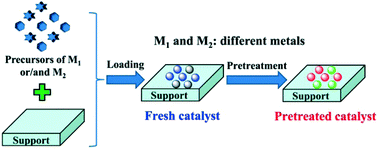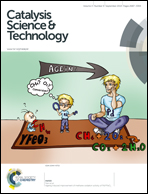Research progress on the catalytic elimination of atmospheric molecular contaminants over supported metal-oxide catalysts
Abstract
Catalytic elimination is an important technique to reduce the emission of atmospheric molecular contaminants (such as CO, NOx, VOCs, HC, and PM, etc.) efficiently. In this field, the supported metal-oxide catalysts have attracted more and more attention in recent years due to their low cost and excellent catalytic performance. It is well known that catalytic performances are significantly dependent on the supports, surface-dispersed components, and the pretreatment of the catalysts. In this work, we present a brief review and propose some perspectives for supported metal-oxide catalysts according to the above-mentioned three aspects. Meanwhile, this paper covers some interesting results about the preparation of supported metal-oxide catalysts and the improvement of their catalytic performances for the elimination of atmospheric molecular contaminants obtained by our research group. Moreover, we propose the concepts of “green integration preparation (GIP)” and “surface synergetic oxygen vacancy (SSOV)” to understand the relationship between the “composition–structure–activity” of the supported metal-oxide catalysts, and further clarify the nature of the catalytic reactions.


 Please wait while we load your content...
Please wait while we load your content...